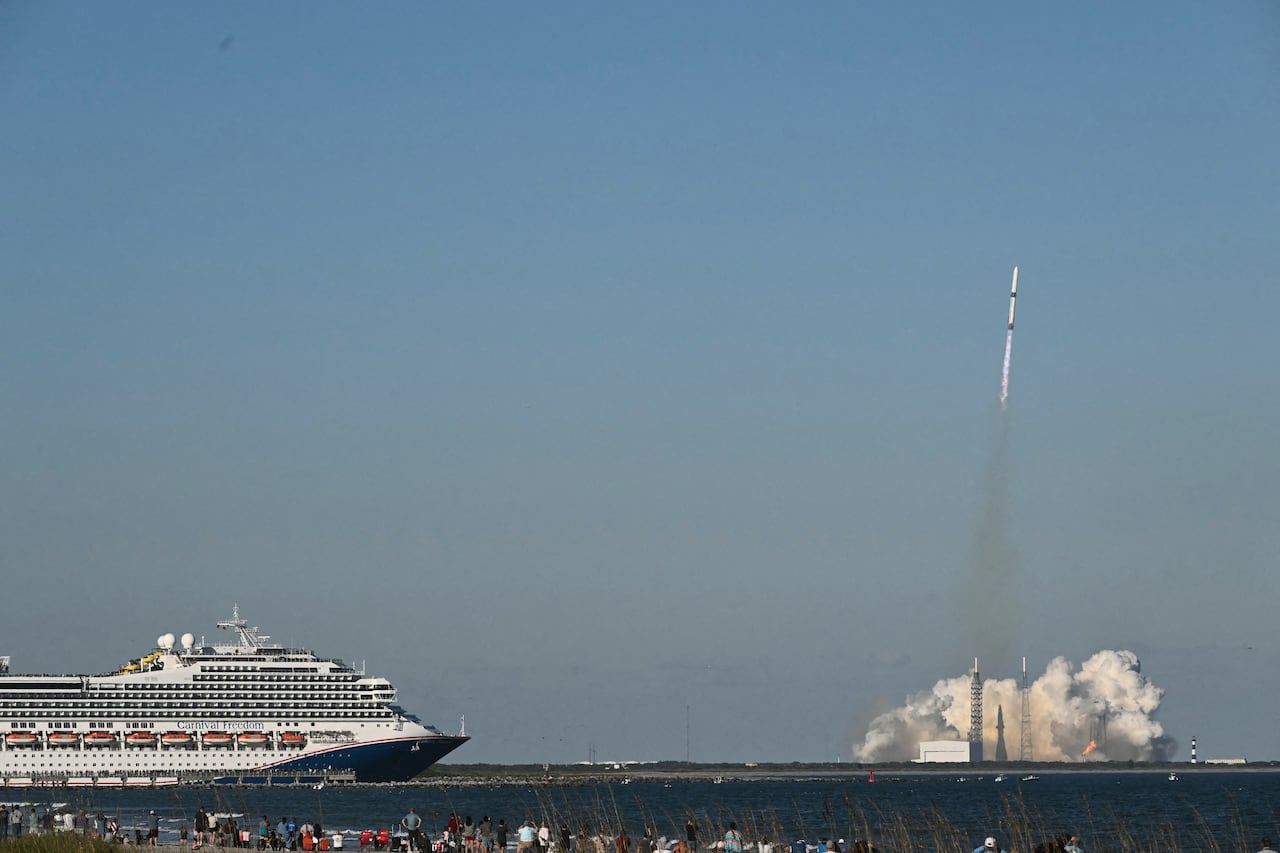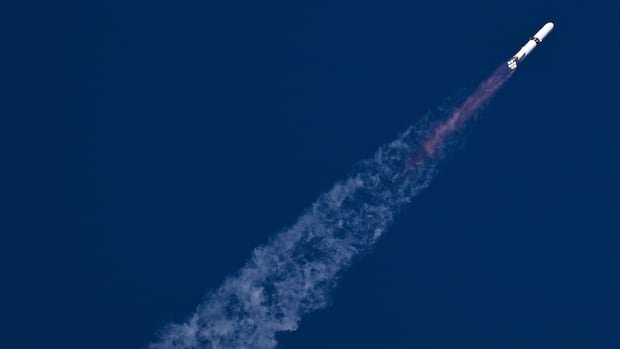Listen to this article
Estimated 5 minutes
The audio version of this article is generated by text-to-speech, a technology based on artificial intelligence.
The giant New Glenn rocket from Jeff Bezos’ space company Blue Origin launched from Florida on its debut mission for paying customers on Thursday, sending two NASA satellites toward Mars while also nailing the landing of its reusable booster for the first time.
The powerful two-stage rocket blasted off from Cape Canaveral Space Force Station, marking the first mission of any kind flown by Blue Origin since the inaugural launch of a New Glenn vehicle, NG-1, in January 2025.
With Thursday’s launch, Blue Origin has delivered into space its first science payload for NASA or any customer, a milestone for the company in its quest to compete on a more equal footing with Elon Musk’s SpaceX, the world’s leading rocket launch service.
A live Blue Origin webcast showed the rocket ascending from its launch tower through clear afternoon skies in a thunder of flames and billowing clouds of vapor moments after its seven BE-4 liquid-fuelled engines roared to life. The launch followed several days of delays due to cloudy skies and a geomagnetic storm.
Some 10 minutes after liftoff, the 17-storey-tall New Glenn first-stage booster made a return landing on the deck of a barge floating in the Atlantic, achieving for Blue Origin a key objective of reusability that was pioneered by Elon Musk’s SpaceX. The first attempt at such a landing in January failed.
Cheers erupted in Blue Origin’s Rocket Park mission control centre at Cape Canaveral as video showed the landing of the booster, dubbed “Never Tell Me the Odds” in a reference to a line spoken by Star Wars hero Han Solo in the film The Empire Strikes Back.
About 20 minutes later, mission control confirmed that New Glenn’s upper stage had achieved its primary mission — deployment of NASA’s twin EscaPADE spacecraft into outer space to embark on a 22-month voyage to Mars.
Arianne Cornell, a Blue Origin vice president, hailed the launch as heralding “the next era of spaceflight for Blue Origin.”
Space weather environment study
The two NASA spacecraft, dubbed Blue and Gold, are due to reach Mars in 2027 and enter synchronized elliptical orbits for an 11-month study of the planet’s space weather environment.

Instruments aboard the satellites will analyze how solar winds — the fluctuating stream of high-energy charged particles from the sun — interact with the relatively weak Martian magnetic field and how that interaction may contribute to depletion of the thin Martian atmosphere.
EscaPADE, short for Escape and Plasma Acceleration and Dynamics Explorers, was originally slated for launch in October 2024, but was delayed by setbacks in development of the New Glenn rocket.
The Blue and Gold satellites were built for NASA by California-based aerospace company Rocket Lab, with instruments supplied by the University of California, Berkeley.
The rocket also carried a secondary payload from the satellite company Viasat that remained attached to its upper stage for a technical demonstration of an in-space communications relay above Earth.
When the rocket made its debut flight in January, it carried Blue Origin’s own payload to space, a prototype for its maneuverable Blue Ring spacecraft it is developing for the Pentagon and commercial customers.
Competition with Musk’s SpaceX
Blue Origin, founded by Bezos in 2000, has until recently been known mainly for a space tourism business that flies wealthy passengers to the edge of space in its suborbital New Shepard rocketship. The single-stage reusable vehicle also has carried more than 200 research experiments inside its capsule.
Blue Origin has spent billions of dollars developing New Glenn, a heavy-lift-class rocket designed to become the company’s workhorse vehicle for flying people and cargo into orbit.
Named for John Glenn, the first American to orbit Earth, the spacecraft produces two times more thrust at liftoff than SpaceX’s Falcon 9 rocket and about the same as SpaceX’s Falcon Heavy vehicle, while offering more cargo room than its rivals.
NASA has spent roughly $55 million for the EscaPADE mission — a modest price tag relative to the agency’s multibillion-dollar space programs — and has paid Blue Origin $18 million US for the New Glenn flight, federal procurement data showed.
Blue Origin also supplies engines for other companies’ rockets, including United Launch Alliance’s Vulcan Centaur, and has been working on a crewed moon lander for NASA’s Artemis lunar exploration program, as well as a space station in collaboration with other entities.
Blue Origin has far to go to catch up with SpaceX, which has launched its Falcon rockets on nearly 280 missions during the past two years, most of them serving its own Starlink satellite business.
Musk’s company also is developing its next-generation Starship rocket, a stainless steel behemoth designed to be fully reusable and serve an array of missions, including flights to the moon and Mars, and expanding SpaceX’s Starlink satellite network.

